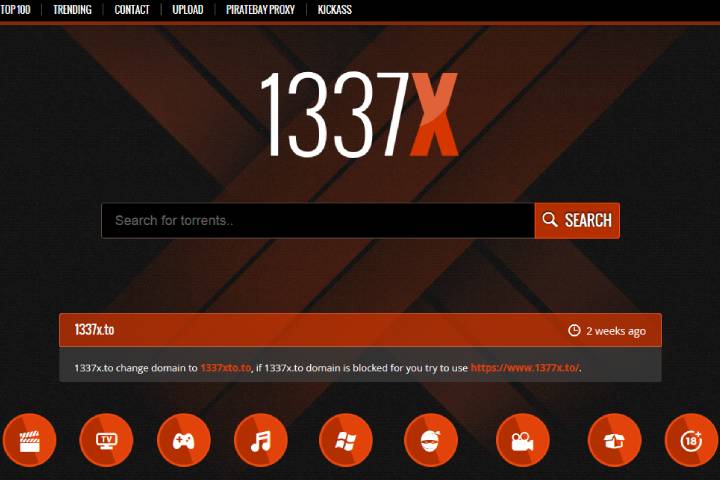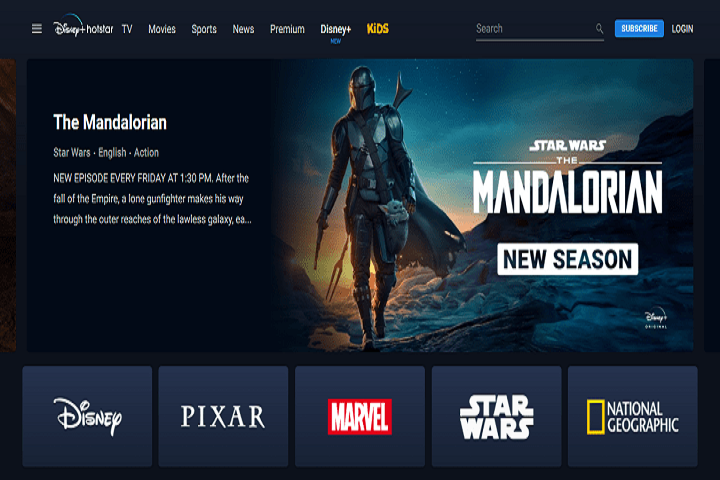Javascript
Cypress vs. WebdriverIO: Key Differences
This blog will dive into the core differences and similarities between Cypress and WebdriverIO. This will enable Quality Assurance professionals to make a well-informed decision when selecting one for their pipelines.

As web development evolves, staying up-to-date on the latest technologies and tools is crucial to streamlining the software testing process. Two popular automation frameworks used by developers worldwide are Cypress and WebdriverIO. While both have a similar goal of facilitating efficient automation testing, the key differences between the two can make one more suitable than the other depending on the project at hand.
This blog will dive into the core differences and similarities between Cypress and WebdriverIO. This will enable Quality Assurance professionals to make a well-informed decision when selecting one for their pipelines.
So, let’s go.
Table of Contents
1. A Comparison of Cypress and WebdriverIO
Cypress and WebdriverIO are currently gaining popularity in the market for their capability to automate modern web applications. Both frameworks possess several similarities. However, WebdriverIO has existed for a significant period and has undergone several upgrades, including adding essential features like Native Apps Testing and Video Recording.
Cypress was first introduced to the market in 2014 and has since gained prominence in testing circles due to the addition of numerous user-friendly features. As such, it is prudent to compare Cypress and WebdriverIO.
It is common for Quality Assurance professionals to inquire about the differences and similarities between Cypress and WebdriverIO and determine which one to choose. The best way to address this is to delve into the unique features and differences between both.
2. What is Cypress?
Cypress is a cutting-edge front-end testing framework designed for advanced web applications. It supports both JavaScript and TypeScript and is rapidly gaining popularity as a viable substitute for Selenium among testers. With Cypress, you can avoid the hassle of installing multiple dependencies, as most of the essential components required for writing test cases are conveniently bundled together. It provides exceptional features, such as impressive debuggability, consistent test result outcomes, time travel capability, automatic wait time, and screen capture.
Cypress employs a distinctive DOM manipulation technique and operates directly within the web browser. Its compatibility spans multiple browsers, such as Google Chrome, Mozilla Firefox, Microsoft Edge (Chromium-based), Electron, and WebKit. Notably, it executes test suites within the browser at a swifter pace than frameworks such as Selenium.
3. Advantages of Cypress
Cypress has emerged as a versatile JavaScript-based end-to-end testing framework in the software testing industry. The platform offers several benefits that make it a desirable option for web application testing. Below are some of the key advantages of Cypress that contribute to its increasing preference among software testing professionals.
Debugging: Cypress offers a range of efficient methods to facilitate debugging and analysis of test scripts. The platform provides debuggability features such as readable stack traces, pause tests, console logs, and control over browser developer tools, which collectively help improve the overall quality and reliability of the testing process.
Auto Wait: The Cypress framework features an automatic wait mechanism that ensures the loading of elements before executing commands and assertions. As a result, testers typically do not need to manually specify additional waits, thereby improving the efficiency of the testing process.
Interactive Window: When operating in “headed mode,” Cypress performs test executions in an interactive window and captures screenshots following the execution of each command. This enables testers to review the results of every test by navigating to the executed commands and assessing the outcome of each.
Stable Results: Cypress stands out from other frameworks due to its unique approach of executing commands directly within the browser window. This approach offers greater control and results in more reliable test outcomes, making it an ideal choice for professional testing scenarios.
Multi-Level Testing: Cypress offers versatile testing capabilities beyond browser-based end-to-end testing workflows. It facilitates end users to easily conduct unit testing, integration testing, and API testing.
Learning and Documentation: Cypress offers comprehensive documentation that facilitates easy learning and implementation of the framework for individuals with a basic understanding of JavaScript.
Community Support: Cypress boasts robust community support with a dynamic network of developers who actively contribute to the platform’s development and provide assistance to novices. This community-centric approach guarantees that Cypress remains up-to-date with the latest features, bug fixes, and enhancements.
Easy to Use: Cypress offers a user-friendly interface, which facilitates the creation and execution of tests for developers and testers. Its intuitive dashboard simplifies the process of test creation, execution, and debugging. Streamlining the testing process enables testers to increase efficiency and save valuable time on test creation and execution.

4. Limitations of Cypress
With its powerful features and intuitive interface, Cypress has swiftly gained a following among QA professionals looking to enhance their testing procedures. However, as with any tool, Cypress has its limitations. While it may excel in certain areas, there are certain scenarios where it may not be the best fit. Knowing these limitations is crucial in understanding when to use them and when to look for alternative solutions.
Cross-Origin Restriction: Cypress prohibits the execution of multiple-origin website navigations in a single test for security and testing integrity reasons.
Multi-Tab/Window Restriction: Cypress does not support multi-tab or multi-window testing. As a result, testers are unable to switch between windows during testing.
iFrame Support: Automating scenarios involving iFrames using Cypress can present challenges requiring careful consideration and expertise.
Locators: Although Cypress supports CSS selectors, it does not offer built-in support for Xpath locators. Therefore, testers are required to utilize an additional plugin to incorporate Xpath into their testing procedures.
Browser Support: Currently, Cypress exclusively caters to the testing needs of Chromium Family and Firefox browsers. Therefore, testers cannot employ Cypress for testing purposes on other browsers, such as Safari.
5. What is WebdriverIO?
The WebdriverIO framework is a comprehensive testing solution managed by the non-profit organization, OpenJS Foundation. It adheres to industry-standard architectural designs recommended by W3 and is built on the NodeJS platform. One of its key features is the ability to test applications using JavaScript and TypeScript, making it a powerful tool for developers seeking to optimize their testing workflows.
WebdriverIO offers the flexibility to configure with both Webdriver Protocol and ChromeDevTools Protocol, allowing users to choose the one that best suits their needs. Webdriver Protocol is the preferred choice for most users due to its extensive functionality, including cross-browser testing. Additionally, WebdriverIO is an open-source tool without any commercial options, distinguishing itself from Cypress.
6. Advantages of WebdriverIO
WebdriverIO is a highly versatile open-source testing framework designed to automate web application testing across various browsers and platforms. Its features and benefits make it an essential tool for software testing professionals. Below listed are a few prominent advantages of WebdriverIO:
Simple and Intuitive API: WebdriverIO offers testers an intuitive and user-friendly API that simplifies the process of writing test scripts, even for those with limited automation experience. The API is comprehensively documented and easily comprehended, ensuring a seamless and efficient testing experience.
Multi-Browser Support: WebdriverIO offers extensive browser support, encompassing popular options such as Chrome, Firefox, Safari, and Internet Explorer. This functionality facilitates testers to conduct tests across multiple browsers, eliminating the need to toggle between various tools or frameworks.
Cross-Platform Testing: One of the significant benefits of utilizing WebdriverIO is its proficient functionality to execute cross-platform testing. This implies that tests can be performed on diverse operating systems such as Windows, macOS, and Linux, enabling thorough testing across multiple platforms.
You can leverage the true capability of WebdriverIO by using a cloud-based platform like LambdaTest. It is a digital experience testing platform that provides access to over 3000+ browsers, devices, and OS. Using LambdaTest, you can run Selenium testing with WebdriverIO. This will help you to successfully integrate project management, CI/CD pipeline, codeless automation, bug tracking, instant messaging, and more.
Parallel Execution: WebdriverIO offers the capability to execute test cases in parallel, substantially improving the testing process’s speed. This feature proves particularly beneficial when testing extensive web applications requiring comprehensive testing.
Integration with Other Tools: WebdriverIO presents itself as a highly adaptable automation solution due to its seamless integration with various tools and frameworks, including Mocha, Jasmine, and Cucumber. This feature enables developers to leverage the benefits of WebdriverIO’s robust automation capabilities without compromising their preferred testing frameworks and tools.
Pipeline Integration: WebdriverIO offers effortless integration with prominent CI/CD tools, including Jenkins, Travis CI, and CircleCI. This feature streamlines the testing process for teams, allowing them to automate their testing and ensure their code is continuously integrated and deployed without disruptions.

7. Limitations of WebdriverIO
With its comprehensive toolset and support for multiple programming languages, WebdriverIO has become a widely used framework. However, there are a few limits of WebdriverIO that developers should be aware of before implementing it in their testing process. Below listed are the limitations of WebdriverIO:
Dependency on Selenium Server: WebdriverIO is a tailored solution built upon Selenium’s foundation. Therefore, any obstacles testers encounter while using Selenium also apply to WebdriverIO.
Confusing Syntax: While WebdriverIO utilizes Javascript as its core programming language, its syntax can be complex for those new to it.
Network Interception: Managing network control and interception can present unique challenges when working with Webdriver technology.
Typescript Integration: WebdriverIO offers Typescript support; however, the configuration process can be time-consuming.
Conclusion
Cypress and WebdriverIO have widely used automation testing tools with unique benefits and drawbacks. Thanks to its exceptional architecture and features, Cypress boasts a user-friendly, high-speed, and efficient testing experience. In contrast, WebdriverIO offers greater adaptability, expandability, and compatibility with diverse frameworks and technologies. Ultimately, selecting either tool depends on the specific demands and preferences of the testing team and the project specifications. Consequently, it’s crucial to thoroughly assess each tool’s merits and demerits before deciding.
-

 Instagram4 years ago
Instagram4 years agoBuy IG likes and buy organic Instagram followers: where to buy them and how?
-

 Instagram4 years ago
Instagram4 years ago100% Genuine Instagram Followers & Likes with Guaranteed Tool
-

 Business5 years ago
Business5 years ago7 Must Have Digital Marketing Tools For Your Small Businesses
-

 Instagram4 years ago
Instagram4 years agoInstagram Followers And Likes – Online Social Media Platform















